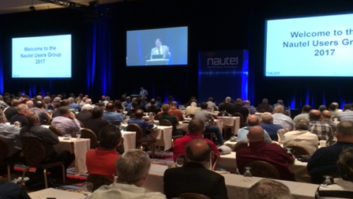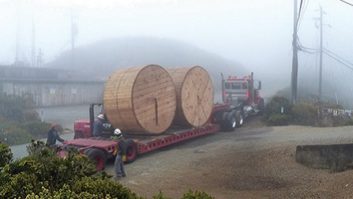Determining total cost of ownership for a broadcast transmitter involves far more than the purchase price, energy costs and maintenance.
Geoff Mendenhall, vice president of transmission research and technology for Harris Corp., will introduce a new analysis tool that he feels gives a more accurate picture. It factors in considerations such as the acquisition, maintenance, operating and training costs of all systems in the transmission facility. He will describe the tool and techniques in his NAB Show engineering session entitled “Transmission System Total Cost of Ownership.”
TCO is about more than reducing direct transmitter operating costs, he said. A comprehensive analysis includes the tradeoffs of air and liquid cooling systems, impact on the overall facility, floor space requirements, size and the thermal efficiency of the transmitter building. In addition to the reduction in direct operating costs, another benefit of improved TCO is a reduction of carbon footprint in support of green technology.

Mendenhall offers this comparison of cumulative TCO of three air-cooled systems vs. a liquid-cooled system.
Most of the attention is directed to DTV transmitters, where efficiencies of 20 to 40 percent are the norm. FM transmitters — where higher efficiencies of 65 to 70 percent for analog FM operation and 50 to 60 percent for IBOC common amplification are typical — can also benefit. State-of-the-art AM transmitters at the 50 kW level are already operating around 90 percent efficiency, so there is considerably less room and incentive for improvements.
There are two dimensions to improving transmitter efficiency. The first is improving the transmitter AC-to-RF efficiency. A major milestone recently was achieved as manufacturers began to adopt LDMOS technology, which gave marked improvements over conventional RF transistors and FETs. Other factors that can improve efficiency include enhanced switching power supplies, reduction of crest factor and variable speed cooling systems.
The second dimension is how the transmitter is cooled.
Mendenhall notes that for many operators, especially those starting a new transmission facility from scratch, liquid-cooled transmitters can significantly reduce the TCO. “Liquid-cooled FM transmitters are virtually unheard of in American radio transmission facilities,” he said, “although they are more common in Europe.”On the other hand, liquid cooling is very familiar to DTV transmission facilities in the U.S. and abroad.
He notes they have many advantages over air-cooled transmitters. For a given power level, liquid-cooled transmitters have a footprint about half the size of their air-cooled brethren. In high-rise buildings where square footage can be costly, this can reduce the amount of space needed, and thus rental costs.
(click thumbnail)
An example of how the TCO system quantifies cost of ownership, as applied to a liquid-cooled UHF multimedia TV transmitter. Here, the 20-year cost is about $304,000.

Since liquid-cooled transmitters come with their own cooling systems, the costs associated with large air conditioning systems go away. This includes purchase price, maintenance and energy costs. Mendenhall adds that most air handling systems have a lifespan of about five years, so regular replacement costs also need to be budgeted.
He cautions that the decision to purchase a liquid-cooled transmitter should not be automatic. “These devices usually have a higher initial cost, and if you are replacing an air-cooled transmitter in an existing facility that already has an air handling system, the investment in an air-conditioning infrastructure has already been made. However, if you are building a new transmission facility from scratch, the advantages of liquid-cooled transmitters may be more profound.”
Mendenhall adds that while liquid-cooled transmitters may be new to American radio broadcasters, television transmission facilities have been done this way for years, so the expertise and successful field experience are available. However, there would be significant costs in developing and designing liquid-cooled FM transmitters for the U.S. market. He expects rising energy costs and increased awareness of TCO to drive interest and demand for liquid-cooled devices. One of the purposes of his session is to test that theory.
Mendenhall’s presentation “Transmission System Total Cost of Ownership” is on Tuesday afternoon, part of the Broadcast Engineering Conference session “Green Engineering for Broadcast.”







